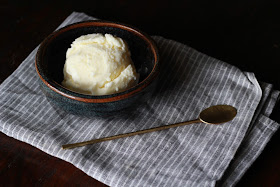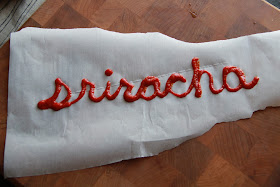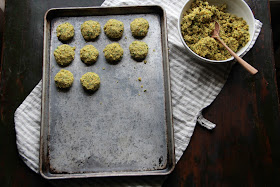Very often strange things happen and I feel like maybe I'm in a sitcom, or a reality show, and I'm there for someone's amusement.
I sometimes glance up to be sure there are no cameras present.
It's as if there's a joke, or a prank, or something is completely off- and most of the time it seems that other people don't quite catch it. I can't see any reactions.
And, with so much of it, it's funnier to look back on it than it is to live it, I suppose. That, or it WAS funny and it just gets funnier.
Last month I was at my grandmother's wake at a funeral home in Indiana. Not a funny situation, right?
Not funny at all.
But, at the end of the wake (I guess it's an "ok, your time is up" type of a thing), I would swear a Willie Nelson song quietly came on over the speakers. I couldn't recall any music playing at all prior to this point. Maybe there was music, but it was obviously so background that it was completely unnoticed.
Don't get me wrong, I do like Willie Nelson, and when I was little I guess he was my immediate family's country music guy. (Hey, maybe the go-to for some was Johnny Cash, but the records we played were Willie- not a Johnny album to be had).
This is not to say in any way that my grandmother was a Willie Nelson fan herself. I don't know that any of these particular cousins grew up with Willie Nelson (It could be a total other side of the family thing, something one parent likes but doesn't necessarily mean much to the other).
I can't recall anything about him with regards to Gran. She certainly wasn't a fan through and through.
But a Willie song played nonetheless- I still swear it.
It wasn't anything like a greatest hit for him, it was more of a public domain type of thing, a "Great American Songbook" type of song. It truly could have been "Red River Valley"- and though I knew what it was immediately upon hearing it, I can't remember what it actually was anymore. I think maybe it's been blocked due to my slight shock that a Willie Nelson song was playing at this event.
(Likewise, I'm extremely averse to hearing Neil Diamond sing selections from Les Miserables while at the grocery store. It's very wrong. Then again, I've got problems with Neil in general- but I think this made things worse.)
Willie, I like you and all, really I do, but you don't quite belong at my grandmother's wake. See, this sort of thing is more appropriate for a movie- mostly because I can see a song like this coming on at a bar, as in their familiar "last call" song at the end of every night before the bar closes ("Turn Out the Lights, The Party's Over" would be a good one for that purpose). That or some ironic twist during a funeral on the big screen- certainly not something for real life.
Who does this in real life?
Anyway, I surreptitiously glanced around as I was listening to see if anyone else was reacting to this.
No.
When I asked a couple people later that night, nobody else had noticed.
Was this song chosen? Maybe by one of my uncles?
Was it a joke?
Was this the funeral home's ending theme for all wakes?
And, well, what is the connection of the story to the recipe?
Nothing at all.
Sorry, the story just sort of happened.
But, Gran really loved chocolate. Even when she wasn't supposed to eat it the last several years because it would make her pass out, she still did. She'd insist that a little bit was ok, and as long as she was at home and not out.
I think she would have been ok with this dessert.
All of that now said, I will also say that sometimes it can be a bit difficult to name a recipe, giving the best general idea of a finished product while trying to be concise (and/with, to include "mousse" or "ganache" in the title? "Stack"? Should I include that word?)
Still working on this aspect.
Maybe this isn't the flashiest of cakes, but it does take a little time and effort to complete the steps.
And the end result of contrasting creamy and crispy, with a little fudgy thrown into the mix that truly isn't so bad.
If you'd like more texture contrast in your cake, perhaps work on it early in the day and serve it the day of. However, if you prefer the cake to be a bit more homogeneous in texture, maybe make it the day before you plan to serve. Either way, it still tastes good.
I'm trying to perfect my giant chocolate meringue game, but for some reason they don't quite want to cooperate. I'm not sure if it's the weather, the fact that there's something IN the meringue as a potential source of oil (ahem, cocoa powder) and meringue distruction...
But, anyway, the meringue seems to go on in the oven just fine for a while- but then it flattens.
It still tastes good, and serves a purpose. Besides, in the end they're all engulfed in ganache and completely hidden.
Well, I would like to potentially make this again soon, and I'll update the recipe with any notes or changes.
So, I'm not saying this one is completely finished!
Chocolate Lavender Meringue Cake
serves 10-12
Meringue:
8 large egg whites, at room temperature
pinch of salt
1 1/4 c (250 g) granulated sugar
1/2 c (40 g) cocoa powder, sieved
Mousse:
14 oz (400 g) dark chocolate, chopped
4 T (56 g) butter
pinch of salt
4 large eggs, separated
1/4 c (50 g) granulated sugar
2/3 c (160 ml) heavy whipping cream
Ganache:
1 c (250 ml) heavy whipping cream
2 T (7 g) dried lavender buds
8 oz (227 g) dark chocolate, chopped
1/2 T (about 7 ml) corn syrup or glucose syrup (optional)
Prior to making the meringue, preheat the oven(s) to 250 F (120 C), and prepare 3 sheet pans with parchment paper, each with a 9 inch diameter circle drawn on (drawn side turned upside-down on the pan).
Beat the egg whites and salt in the bowl of an electric mixer until soft peaks form. With the mixture running on low, slowly add the sugar. Continue to beat until all is incorporated and there are no sugar granules present (touch a bit of the meringue and then rub it between your fingers to test).
Carefully fold in the cocoa powder using a large metal spoon or a rubber spatula, scraping the sides and bottom of the bowl, to incorporate as best as possible while deflating the whites as little as possible.
Divide the chocolate meringue between the pans, by piping it onto the rounds or scooping directly from the bowl. Smooth the meringues so they're relatively round and within the borders of the circles.
Bake the meringues 1 hour and 15 minutes, rotating the pans about halfway through, then leave the meringues to cool completely in the oven(s) with the light on (this will be at least 2 hours).
In the end, the meringues should be dry, not gooey. If they are sticky, maybe add a little heat and time...
To make the mousse, melt the chocolate along with the butter and salt in a bowl set over a pan of simmering water (bain marie). Stir until smooth, remove the bowl from the pan and set aside to cool 5-10 minutes.
Whisk the egg whites in a clean bowl until stiff peaks form. Slowly add the sugar and continue whisking until stiff peaks form. Set aside.
Add the egg yolks to the melted chocolate mixture one at a time, whisking to incorporate fully between additions.
Fold the stiff egg whites into the chocolate mixture, beginning with about 1/3 to lighten the mixture, and then adding the rest, folding a bit more gently.
Whip the cream in the egg white bowl (save a little cleanup!) until medium peaks form. Fold half of this into the mousse, then add and fold in the final half. It's ok if your mousse is a little streaky and not all the cream is totally mixed in.
Place a meringue round on a piece of parchment paper on top of a cutting board or tray (perhaps in a springform pan that it will fit into so as to keep the sides straight). Top it with half the mousse and spread it evenly about an inch from the edge. Top the meringue with another meringue round, press down slightly to spread the mousse closer to the edge, then top the second meringue with the rest of the chocolate mousse. Again, spread the mousse to about an inch from the edge, add the last meringue and press down slightly.
Cover with plastic wrap and refrigerate at least 4 hours.
About an hour before you would like to serve the cake, remove it from the fridge.
Place the cake on a rack placed on top of a pan with sides that's been covered with aluminum foil.
In a small saucepan, place the cream and lavender buds. Bring the cream to a strong simmer, remove the pan from the heat, cover and let the mixture steep 5 minutes.
Strain the lavender cream over the chopped dark chocolate. Let sit a minute, then stir until smooth. Add the corn or glucose syrup if using (not necessary, but it will add a bit of patent leather sheen).
Let the lavender ganache cool a couple minutes to thicken slightly, then slowly pour it over the top of your cake. The ganache will drip down over the sides, and you may spoon it from the pan and back onto the sides to help cover any bald spots if desired.
(OTHERWISE, the ganache that is left on the foil-covered pan can be repurposed for some great hot chocolate- just stir into hot milk to taste.)
Leave the coating to set before serving (and of course, you can put it back in the fridge for later if you wish).
Cut the cake with a serrated knife, and store any leftovers in the fridge.



















































